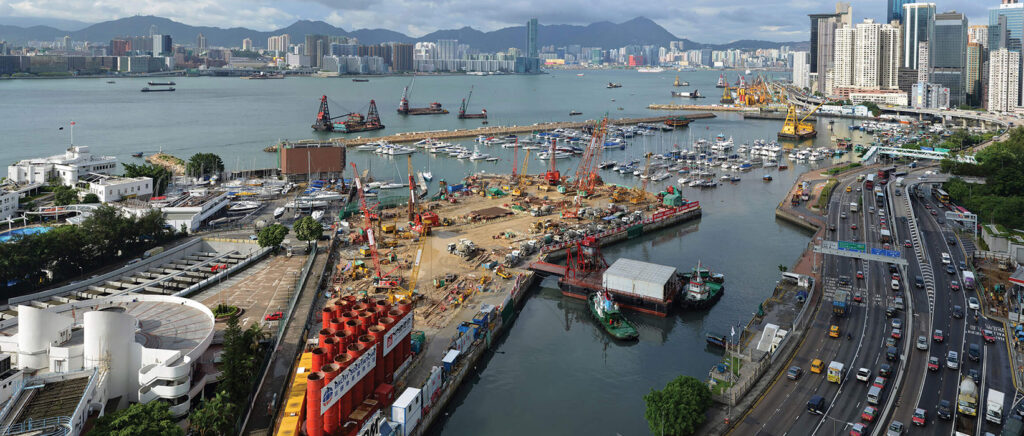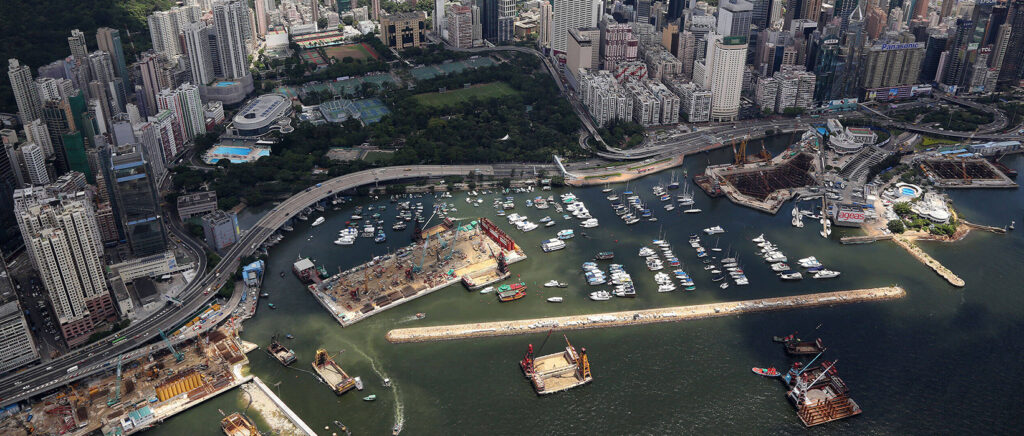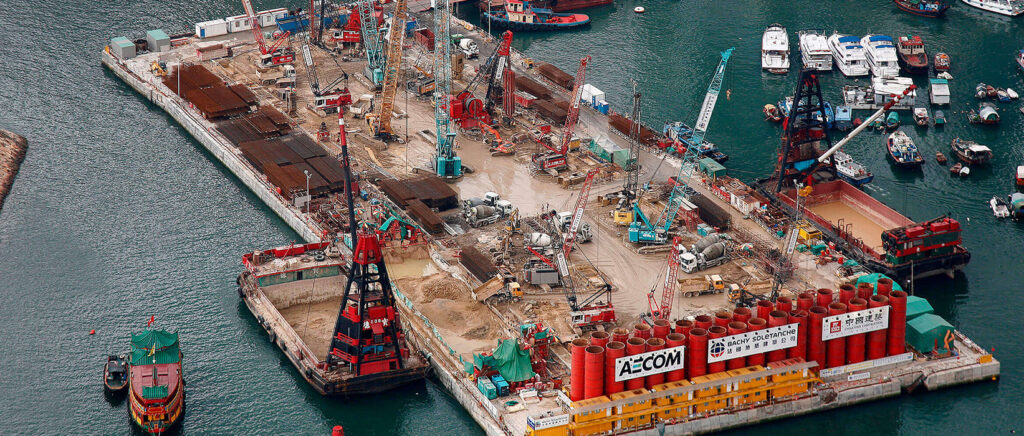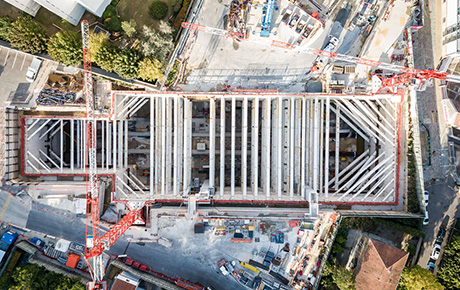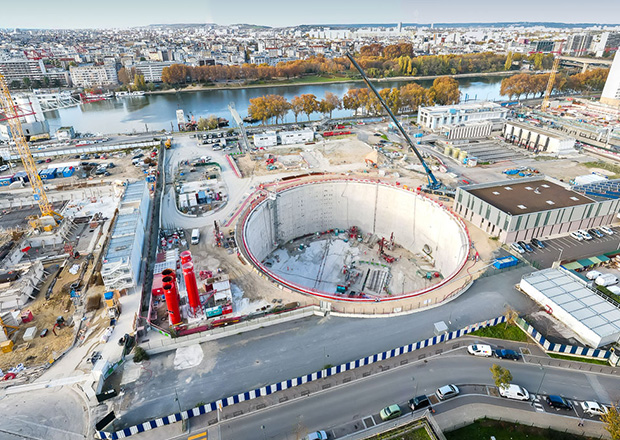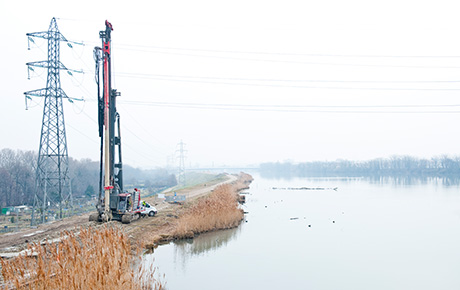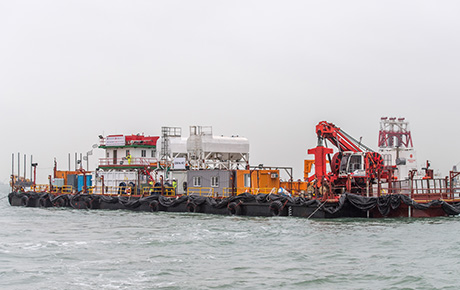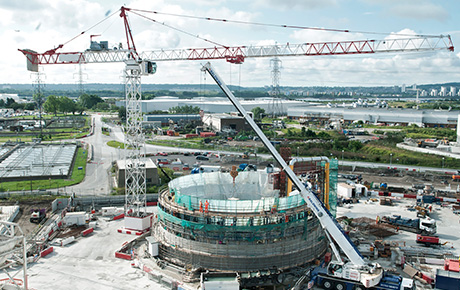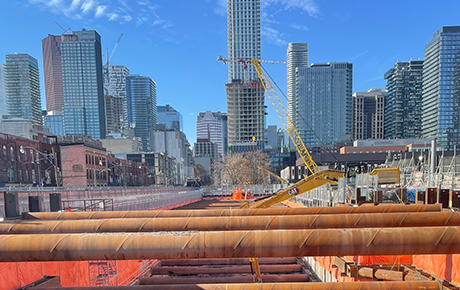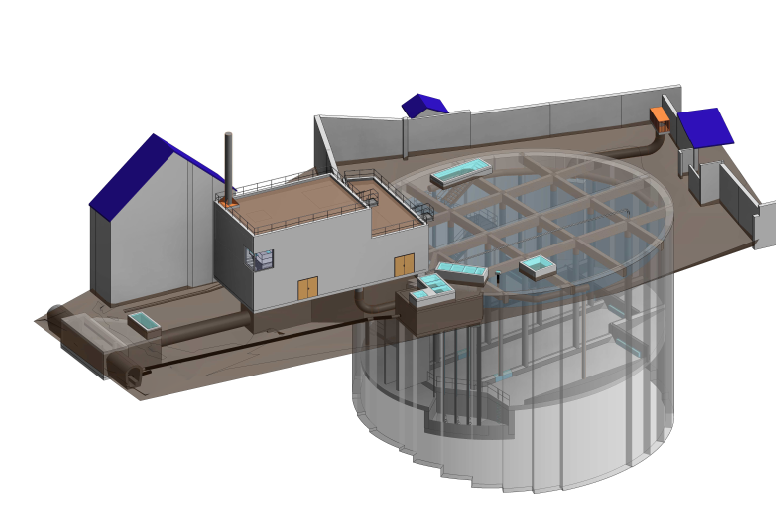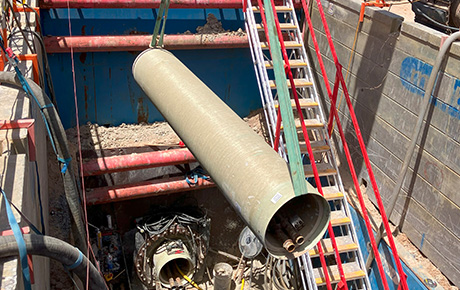Project Description
Context of the project
Soletanche Bachy built the foundation of a road portion located between Causeway Bay and North Point across the Hong Kong Yacht Club.
The Central – Wan Chai Bypass and Island Eastern Corridor Link is a 4.5 km long dual tree-lane trunk road with a 3.7 km long tunnel which forms part of an East-West stra¬tegic route along the north shore of Hong Kong Island.
The whole Central – Wan Chai By¬pass project comprised 10 contract packages. The foundation works on Contract 15, which was awarded to Bachy Soletanche Group Limited (BSGL) in April 2010, comprised the portion located between Causeway Bay and North Point across the Hong Kong Yacht Club.
Description of the project
Various technical options were initially contemplated by the local authorities for the construction of the underground highway. After detailed analysis and due consideration to various technical and environmental constraints, the Highway department selected a cut and cover method with installation of a 1.50 m thick permanent diaphragm wall socketed into the Moderately Decomposed Granite on both sides of the future highway. The depth of the wall varied from 14 m to 74 m. The excavation had to be carried out through the completely decomposed granite with many boulders and core stones being encountered above bedrock level.
Our solution
Due to environmental constraints, dredging and reclaiming permanently lands off-shore Hong Kong Island raises strong opposition from the community and does not constitute anymore an acceptable construction method. Consequently, a very specific construction sequence relying on the installation of temporary reclaimed working platform has been chosen.
The sequence of works was as follow:
- within the Yacht Club Area installation of “reclaimed islands” to be used as temporary working platforms
- From these platforms, installation of the permanent diaphragm walls and barrettes to form “cut and cover boxes”
- excavation of the boxes with installation of temporary struts and construction of the permanent reinforced structure
- backfilling of the boxes up to sea bed level, demolition and removal of the diaphragm wall above seabed level and removal of the temporary platform to reinstate the site to its original state.
The diaphragm wall and barrettes being excavated through the uncontrolled fill which was put in place without any specific compaction, ground treatment was required to prevent leakage of bentonite slurry and possibly trench instability and water pollution. For this reason, prior to start the diaphragm wall excavation, a grout curtain was installed on both faces of the excavation. Furthermore, in specific areas, ground treatment using slurry wall technique was required to remove the temporary seawalls installed to form the working platforms.
Marine logistics
The foundation works were carried out in 3 separate visits to site. For each of these visits, the works were executed from reclaimed artificial islands with no land access. As a consequence, all manpower, plants, raw materials and consumables had to be brought by sea:
- the concrete was supplied by conventional truck mixers transported to site on specially designed barges able to accommodate 8 to 12 trucks mixers,
- at peak, 15,000 litres of diesel were required daily for BSGL plant and equipment. The diesel was pumped from land to the “working island” through a specially installed pipeline.
Altogether, 10 barges and 10 tug boats were mobilized to deliver daily materials, plant and consumable to site.
A very tight programme
In addition to marine vessels, heavy specialist plants were also mobilized to site. Up to 2 Hydrofraises, 9 grabs, 8 service cranes (up to a capacity of 250 tonnes) were working concurrently on the 200 m x 80 m platform.
An off-site steel yard was also set-up in order to produce 160 tonnes of bent and fixed steel per day and allow a production of 5 to 6 panels per week (3,200 m3 of concrete a week). The 3rd visit to site was particularly intense with 28 000 m2 of diaphragm wall and barrettes completed in 4.5 months.
Key figures of the project
